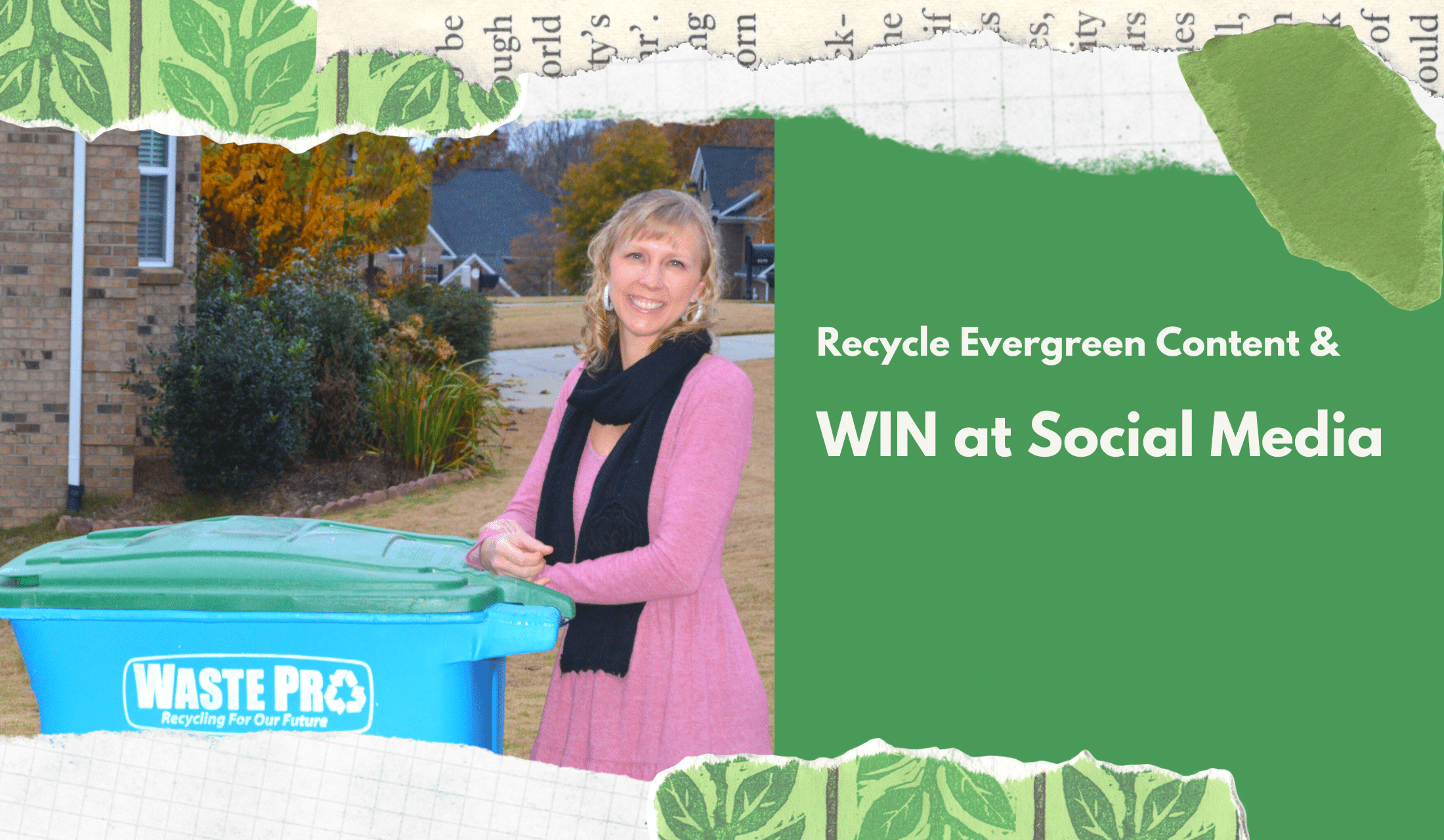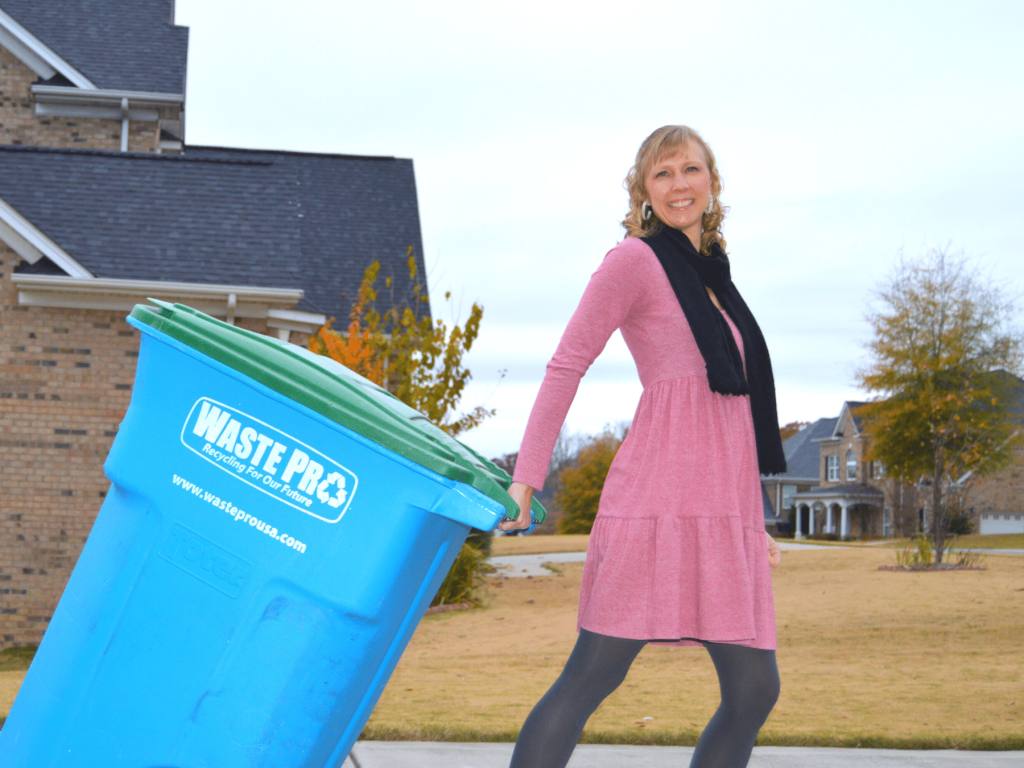
Many small businesses dread this question– what do I post on social media today? Even if you’ve hired someone to manage it, you still get that all-important question, “what can we put on social media next month?”
Ugh! The question alone can send you overboard. So, put both feet back in the boat, and let’s row through this together. Content creation for social media doesn’t have to be hard with the right process in place.
What is Content?
Before we dive in, let’s define content. Content is anything you see, hear, or read on the internet. It takes the form of a blog, video, infographic, whitepaper, e-book, case study, checklist, photo, social media post, and more.
Without content, the internet would be empty and look like the desert – nothingness for miles on end.
Content creation is where you identify a new topic, decide what form you want that content to take, and then create it.
How to Identify Content Topics
If you’re not sure what topics are right for your business, do some research. First, look back at what you’ve shared on social media through insights and data to determine what gets the highest engagement. Then, determine if those topics best reflect your current and future business.
Benchmark your competitors. What topics are they sharing? Evaluate the engagement they receive. You might find something inspiring that you do or don’t want to use.
Conduct a social media survey and ask your audience for feedback. You might hear something you haven’t thought about.
Consult your sales team, customer service team, or other colleagues for common questions and issues they get from customers. Then, you can help solve problems or pain points with your content.
Once you’ve done the research, put together a list of topics your business will share on social media. Then, identify the topic as news or evergreen content.
News is something you share once or a few times. You can recycle and reshare evergreen content multiple times. Often, evergreen content is educational and teaches or informs your audience.
How to beautifully wrap a present is an example of an evergreen content piece.
Here’s an example of topics categorized as news or evergreen:
- Tips and best practices – evergreen
- Quotes – evergreen
- Company and industry updates – news
- Behind the scenes – news
- Employee spotlight – news
- How-to videos – evergreen
At this point, if you don’t have at least a few evergreen topics, redo your list. Ensure you have a good balance of news and evergreen topics.
The Problem with Content Creation for Social Media
It’s easy to get stuck in the content creation bucket. You spend so much time, money, resources, and effort creating that one thing. Then, you upload it to your website, e-newsletter, and write one social media post. Check! Done!
You move on to the next big thing, never to see that content piece again, or not for several years.
But on social media, on average, only 94-95% of your audience WILL NOT see that one post you wrote. That’s a lot of hard work for it to get missed by so many people. What a waste!
Don’t let your hard work and effort get wasted in the deep abyss of social media. Instead, get a proven process that prevents you from getting stuck on the wheel of constantly creating something new nobody sees.
Recycle Content on Social Media
What does it mean to recycle content on social media? You share that piece of content (blog, infographic, video, white paper, etc.) more than once.
You can either write new post copy or reuse the same post copy each time with that content piece. I prefer to write something new, which means I’m just recycling that content piece.
But I know some big brands that reuse the exact copy with that content piece successfully over and over again. That’s recycling a social media post because it remains in its original form each time.
Either way, your audience will rarely see it twice. So whether you recycle just that content piece or the entire social media post, choose what’s right for your brand.
Unsure? Test both strategies and see which one works best. Your audience will let you know.
Recycling content helps it get in front of the eyeballs that need to see it. More people who see and engage with your content ensure the time, effort, and resources used to produce it are well-spent. And you get a break from creating something new ALL the time.

Create a Resharing Process
How many times should a content piece be shared, and how often? Start with reviewing your news and evergreen content categories. Then, depending on the content, you might only share the list categorized as news only once or a few times.
A set process for evergreen content ensures everything stays organized, and you’re spacing out how often it’s shared. Here’s where I typically start:
- Facebook, Instagram, Twitter, and LinkedIn – Day of post, 1 month after post, 3 months after post, 6 months after post, and 1 year after the post
- Pinterest – create 2-3 different PINs
This recommended schedule by platform gives you a starting point. Then, adjust for your brand and audience once you begin seeing the impact on your social media.
Use a calendar to organize future posts. You’ll never remember what should be shared when otherwise. Excel works. Or, you can grab a fancy social media calendar template.
Then, the minute you create evergreen content, drop it into your calendar following the sharing schedule you’ve set. That way, you don’t lose track of when it needs to be reshared.
Let’s look at the process in action. I write a blog that provides educational, evergreen content. For example, I shared a blog article on Facebook and Instagram for the first time in December. I then recycled it by sharing that article with new post copy in January, March, June, and December of the following year.
For Pinterest, I create 2 PINs and post one in December and one in January. You can share PINs within the same month or separate months. Test both approaches to determine what works best for your brand.
What about evergreen content focused on a season? For example, I write a blog article about how to spring clean your website for updates. However, I don’t want to share this article beyond the spring season.
Therefore, it’s best to write and share it the first time as early on in the season as possible. For example, you might share it for the first time in March, then April, and May. Then, recycle it for the following year within the same months. Use your calendar to keep track of the schedule.
As a solopreneur, I do everything in my business. I write blogs, e-mails, and social media posts, respond to e-mails, handle admin tasks, and perform the work for clients.
I know how it feels to dread social media. You’re already drowning in work, have no idea what to post, and are always behind. So stop the madness and crush content creation for social media by recycling evergreen content.
Leave me a comment and let me know how you’ll apply the process in your business. Here’s to your social media success!
Read, set, grow!


Leave a Reply